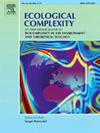Ecological and environmental factors influencing exclusion patterns of phytoplankton size classes in lake systems
IF 3.1
3区 环境科学与生态学
Q2 ECOLOGY
引用次数: 0
Abstract
For decades, ecologists have been intrigued by the paradoxical coexistence of a wide range of phytoplankton types on a seemingly limited number of resources. The interactions between environmental conditions and trade-offs emerging from eco-physiological traits of phytoplankton are typically proposed to explain coexistence. The number of coexisting types over ecological time scales reflects what we call here ‘exclusion patterns’, that is, the temporal removal of certain phytoplankton types due to competition. Despite many observational and mathematical modelling efforts over the last two decades, we still know surprisingly little, in quantitative terms, about how the interplay of nutrient regimes and specific zooplankton grazing strategies affects the exclusion patterns of competing phytoplankton types. Phytoplankton types can be distinguished according to many different traits. Among various morphological traits, phytoplankton cell size is considered one of the most meaningful in explaining crucial eco-physiological processes, including nutrient uptake and zooplankton grazing. Here we use a size-based plankton model to investigate exclusion patterns of phytoplankton size classes over ecological time scales and under varying environmental conditions. We performed numerical experiments under different allometric scaling relationships, different combinations of specialist and generalist grazing strategies, different inorganic nutrient regimes, and different mixing frequencies. We quantified exclusion patterns by using two metrics: (1) coexistence, defined here as the average number of size classes present over the first 30 days of the simulations, and (2) exclusion time scale, defined here as the time required to outcompete 80 % of the size classes present in the system at the beginning of the simulations. Under low nutrient regimes, we found that the impact of grazing on the exclusion patterns of phytoplankton was almost negligible. Under high nutrient regimes, different exclusion patterns emerged depending on the grazing strategy. When the community of zooplankton was dominated by generalist grazers, we found higher coexistence and longer exclusion time scales of phytoplankton size classes than when the community of zooplankton was dominated by specialist grazers. We further found that the combined effects of grazing strategies and allometric relationships on the size structure of the phytoplankton community were significant and non-trivial. We thus argue that plankton models disregarding these processes may miss relevant drivers of phytoplankton community assembly and trait diversity.
影响湖泊系统浮游植物大小分类排斥格局的生态环境因子
几十年来,生态学家一直对各种浮游植物在看似有限的资源上的矛盾共存感兴趣。环境条件与浮游植物生态生理特性之间的相互作用通常被用来解释共存。生态时间尺度上共存类型的数量反映了我们所谓的“排除模式”,即由于竞争而导致某些浮游植物类型的暂时消失。尽管在过去二十年中进行了许多观测和数学建模工作,但从定量角度来看,我们对营养体制和特定浮游动物放牧策略如何相互作用影响竞争浮游植物类型的排斥模式仍然知之甚少。浮游植物的种类可以根据许多不同的特征来区分。在各种形态特征中,浮游植物的细胞大小被认为是解释营养吸收和浮游动物放牧等重要生理生态过程的最有意义的特征之一。在这里,我们使用基于浮游植物大小的模型来研究浮游植物大小类别在生态时间尺度和不同环境条件下的排斥模式。在不同异速生长尺度关系、不同放牧策略组合、不同无机营养体系和不同混合频率下进行了数值实验。我们通过使用两个指标来量化排除模式:(1)共存,在这里定义为模拟前30天内出现的大小类别的平均数量;(2)排除时间尺度,在这里定义为在模拟开始时超过系统中存在的80%大小类别所需的时间。在低营养条件下,我们发现放牧对浮游植物排斥模式的影响几乎可以忽略不计。在高营养条件下,不同的放牧策略出现了不同的排斥模式。当浮游动物群落以通才食草动物为主时,浮游植物大小类别的共存率较高,排斥时间尺度较专一食草动物为主时长。我们进一步发现,放牧策略和异速生长关系对浮游植物群落大小结构的综合影响是显著的,而且不是微不足道的。因此,我们认为忽视这些过程的浮游生物模型可能会错过浮游植物群落组装和性状多样性的相关驱动因素。
本文章由计算机程序翻译,如有差异,请以英文原文为准。
求助全文
约1分钟内获得全文
求助全文
来源期刊

Ecological Complexity
环境科学-生态学
CiteScore
7.10
自引率
0.00%
发文量
24
审稿时长
3 months
期刊介绍:
Ecological Complexity is an international journal devoted to the publication of high quality, peer-reviewed articles on all aspects of biocomplexity in the environment, theoretical ecology, and special issues on topics of current interest. The scope of the journal is wide and interdisciplinary with an integrated and quantitative approach. The journal particularly encourages submission of papers that integrate natural and social processes at appropriately broad spatio-temporal scales.
Ecological Complexity will publish research into the following areas:
• All aspects of biocomplexity in the environment and theoretical ecology
• Ecosystems and biospheres as complex adaptive systems
• Self-organization of spatially extended ecosystems
• Emergent properties and structures of complex ecosystems
• Ecological pattern formation in space and time
• The role of biophysical constraints and evolutionary attractors on species assemblages
• Ecological scaling (scale invariance, scale covariance and across scale dynamics), allometry, and hierarchy theory
• Ecological topology and networks
• Studies towards an ecology of complex systems
• Complex systems approaches for the study of dynamic human-environment interactions
• Using knowledge of nonlinear phenomena to better guide policy development for adaptation strategies and mitigation to environmental change
• New tools and methods for studying ecological complexity
 求助内容:
求助内容: 应助结果提醒方式:
应助结果提醒方式:


